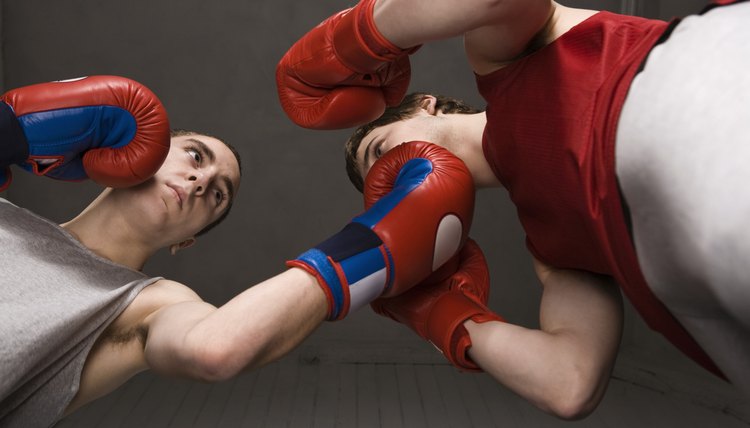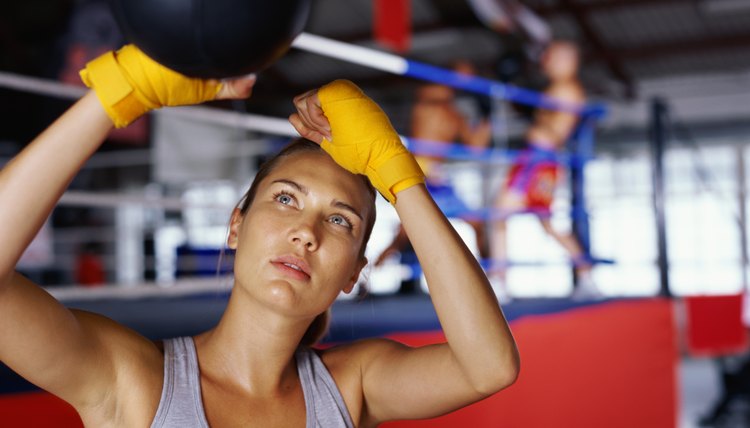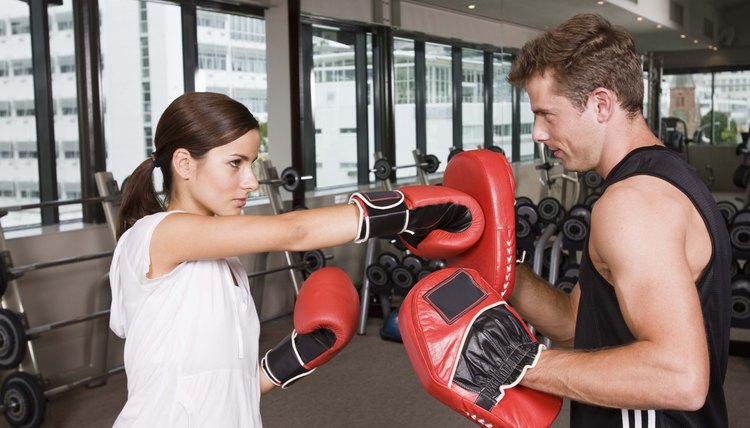Best Place to Deliver a Knockout Punch

The knockout punch is the coup de grace of boxing. A fighter could be on the ropes for most of the fight yet in one instant can deal a blow that sends his opponent crumbling to the mat. Understanding a knockout punch means understanding the science and the physics behind this devastating blow.
Blow to the Head

Jupiterimages/Polka Dot/Getty Images
If you watch video clips of old fights, you'll see a common trait: A fleeting moment of weakness on the part of Boxer A, and Boxer B delivers a shot straight to the head, usually on the chin. Boxer A is stunned and his body falls heavily to the floor.
The best place to deliver a knockout punch is to the head. Specifically, the boxer should aim for the chin, the lower jawline and the base of the neck. A direct hit to these areas will almost certainly drop the boxer, which is why protecting the head and the chin is the first thing young boxers learn how to do. The reason this is the best place to land a knockout punch comes in the way a boxer learns to throw a punch and the physics involved when a boxer lands that punch.
Proper Punch

Jupiterimages/Polka Dot/Getty Images
Boxers are trained to throw punches. Unless you have had some instruction on the proper technique, actually landing a knockout punch will be difficult. Amateurs tend to ball their fists incorrectly, leaving space between the fingers and thumb. The result is that the punch only glances off the chin or the face with little force or impact. Part of the reason amateurs have trouble landing knockout punches is that they do not focus or practice on the proper way to throw a punch.
Before throwing a proper punch, learn to ball your fist correctly. Start with an open hand as if you were going to slap someone a "high-five." Tightly curl your finger tips to the base of your palm; keep them tightly in place. Tightly curl your folded fingers into the middle of your palm and squeeze your hand shut. Lastly, fold your thumb tightly over the ring- and middle-fingers. The result is a tightly packed fist with little space for the fingers to move. This will help you deliver stronger punches with less chance of self-injury.
Learn how to throw a punch. For right-handed boxers (lefties can simply reverse these directions), keep your left foot forward and exhale with every punch you throw. Stay on the balls of your feet and keep you knees bent slightly. Move in with the punch with your entire body. Drop your left shoulder slightly and follow through with the right arm. Aim for your target (in this case the boxer's chin) and follow through with your punch. Learning the proper punch technique will enable you to deliver proper knockout punches.
Circulation to the Brain Compressed

Jupiterimages/Polka Dot/Getty Images
A blow to the chin, lower jawline or base of the neck jars the nerves located in that region. These nerves are integral in controlling various digestive functions such as the jaw muscles, the tongue and the sinuses. This creates an initial shock to the boxer's system. The force of the punch snaps the boxer's head back or to the side and causes the blood circulating in the brain to compress. As this happens, the boxer loses control over his body and drops to the ground.
Guarding your chin and your head are the first line of defense. A strong neck may help reduce knockouts since strong neck muscles may allow a boxer to keep his head steady, reducing the chance that the head will snap backward or to the side when hit. This would reduce the chance of the blood compressing in the brain and thereby reduce the chance of getting knocked out.
References
Writer Bio
Based in Traverse City, Mich., George Lawrence has been writing professionally since 2009. His work primarily appears on various websites. An avid outdoorsman, Lawrence holds Bachelor of Arts degrees in both criminal justice and English from Michigan State University, as well as a Juris Doctor from the Thomas M. Cooley Law School, where he graduated with honors.
